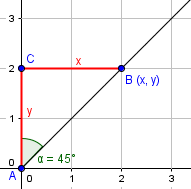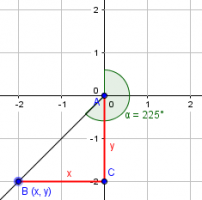Hi folks,
New bloke here. I've been away from complex maths problems for a long time and just been hit with this question out of the blue by my Son who is Autistic.
He wants to find the angle of a point on a graph that runs through the zero point of an X Y graph where X and Y can be both positive and negative with the zero angle always being along the positive Y axis going anti clockwise around the graph.
for example
the line (0,0), (2,2) is at 45 degrees to the positive Y axis.
the line (0,0), (-2,-2) is at 225 degrees to the positive Y axis.
How do you calculate the angle for any second point ?
My head is about to explode...
Harry
New bloke here. I've been away from complex maths problems for a long time and just been hit with this question out of the blue by my Son who is Autistic.
He wants to find the angle of a point on a graph that runs through the zero point of an X Y graph where X and Y can be both positive and negative with the zero angle always being along the positive Y axis going anti clockwise around the graph.
for example
the line (0,0), (2,2) is at 45 degrees to the positive Y axis.
the line (0,0), (-2,-2) is at 225 degrees to the positive Y axis.
How do you calculate the angle for any second point ?
My head is about to explode...
Harry


